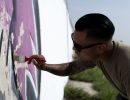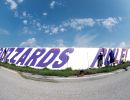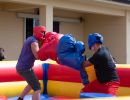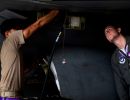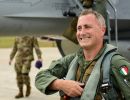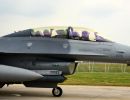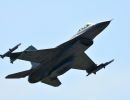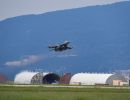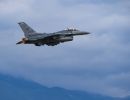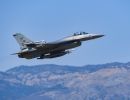TACOP FINAL REPORT
29 Nov 64 – 14 Dec 64
OPERATION NIGHT OWL
PART I GENERAL DESCRIPTION OF THE MISSION
PART II COMPOSITION OF THE FORCE
PART III NARRATIVE SUMMARY OF OPERATION
PART IV RESUME OF OPERATION
PART V ANALYSIS OF THE COMPLETE OPERATION
TAB A. OPERATIONS
TAB B. INTELLIGENCE
TAB C. LOGISTICS
TAB D. COMMUNICATIONS
TAB E. PERSONNEL
TAB F. COMMAND RELATIONS
TAB G. ADMINISTRATION
TAB H. MEDICAL
TAB I. COMPTROLLER
TAB J OTHER
TAB K. RECOMMENDATIONS
PART I
GENERAL DESCRIPTION OF THE MISSION:
The 510th Tactical Fighter Squadron deployed (8) aircrews to McCoy AFB on 29 November 1964 for purposes of Night Owl initial training. Aircraft and support personnel were already in place for earlier support of the 90th TFS. Period of TDY lasted through 14 December 1964.
PART II
COMPOSITION OF THE FORCE:
| START | MID POINT | END |
| 8 F-100 Aircraft | 4 F-100D Aircraft | 3 F-100D Aircraft |
| 63 Support Personnel | 43 Support Personnel | 47 Support Personnel |
| 8 510th Aircraft Commanders | 4 510th Aircraft Commanders | 3 510th Aircraft Commanders |
PART III
NARRATIVE SUMMARY OF OPERATIONS:
a. Scheduling and completion of Night Owl training was complicated somewhat by the ORI which necessitated returning four (4) aircraft and twenty-one (21) support personnel to our home station for ORI support.
b. The operation consisted of 92 sorties scheduled. Of these, 72 sorties were flown in support of Night Owl training and 14 sorties were deployment and redeployment. One sortie lost to electrical system malfunction and 8 sorties were air aborted due to weather over the target area.
c. Six aircraft commander successfully completed training on 11 December and all personnel and equipment returned to England AFB on 14 December via F-100 and C-130 airlift.
Night Owl Training: The aircraft commanders scheduled for Night Owl training completed all Phase I and Phase Ii training prior to deployment. All aircraft commanders completed Phase III and Phase IV plus on Phase V mission prior to recall on 3 December. The remaining three aircraft commanders to receive training continued and completed Night Owl training on 8 December. On 9 December, 3 of the original personnel returned and continued training. These 3 completed training on 11 December 1964.
PART IV
RESUME OF OPERATION:
1. Statistics:
a. Sorties Scheduled – 78
b. Sorties Flown – 72
c. Sorties Effective – 65
d. Hours Flown – 66.1
e. Number Aborts:(1) Air – 7
(2) Ground – 6
2. Sorties flown in support of the mission:
a. Sorties Scheduled (Deployment & Redeployment) – 18
b. Sorties Flown – 18
c. Number Aborts(1) Air – 0
(2) Ground – 0d. Hours flown – 29.6
PART V
ANALYSIS OF THE COMPLETE OPERATION:
TAB A – OPERATIONS
TAB B – INTELLIGENCE
TAB C – LOGISTICS
TAB D – COMMUNICATIONS
TAB E – PERSONNEL
TAB F – COMMAND RELATIONS
TAB G - ADMINISTRATION
TAB H – MEDICAL
TAB I - COMPTROLLER
TAB J – OTHER
TAB K - RECOMMENDATIONS
/s/ Elder E. C. Tetzlaff
ELDER E. C. TETZLAFF
Major, USAF
Operations Officer
A TRUE COPY:
COWAN S. HILL, JR
Major, USAF
Chief, Intelligence Division
TAB A
OPERATIONS
1. The purpose of Night Owl was to qualify tactical aircraft commanders in night operations. Aircraft commanders flew night low level missions, performed night low level bombing and strafing by flare light. All pilots qualified in low level bombing (10°) and in strafing by AFR 55-89 criteria for day operations. Some problem areas arose and are discussed below.
PROBLEM: The present method of flare delivery indicates that aircraft survivability rate against a well defended target would be unacceptable for continued operations. The altitude (4200’) and airspeed (300 KIAS) criteria for flare delivery places an aircraft into an environment highly susceptible to damage and loss against a well defended target manned with trained personnel.
PROBLEM: The LAU-12, MK-53 launcher is not designed for continued use. Maintenance of launchers to sustain training operations for eight sorties a day requires a load crew’s efforts for each days operations. Flare malfunctions occurred due to flares failing to release because of tube deformation due to explosive squibs firing and flare parachutes failing to open, or streaming. Also some flares failed to ignite.
PROBLEM: During calm or slight crosswind conditions, the burst out flares drift into the pull out area. They are very hard to see and sooner or later one will be hit by an aircraft. The assorted hardware remaining could easily cause damage and even engine failure if sucked into the engine.
PROBLEM: Present maps available are unsuitable for night low level navigation.
PERCENTAGE EFFECTIVENESS OF ALL DELIVERIES:
| SKIP | STRAFE | |
| Barnes | 50% | 30% |
| Boyd | 75% | 34% |
| Meagher | 66% | 38% |
| O’Brien | 87% | 35% |
| Tetzlaff | 87% | 42% |
| Thorkelsen | 75% | 44% |
TAB B
INTELLIGENCE
NOT APPLICABLE
TAB C
LOGISTICS
TAB D
COMMUNICATIONS
TAB E
PERSONNEL
The quality and skill levels of deployed personnel was highly satisfactory. All personnel, especially munitions load teams and maintenance personnel gave outstanding support to the operation.
TAB F
COMMAND RELATIONS
SATISFACTORY
TAB G
ADMINISTRATION
SATISFACTORY
TAB H
MEDICAL
SATISFACTORY
TAB I
COMPTROLLER
SATISFACTORY
TAB J
OTHER
Billeting of officers and airmen is a problem. Present billeting arrangements are in buildings used by many other personnel. The working hours varied considerably causing much noise and distraction for Night Owl personnel trying to sleep during the morning hours.
TAB K
RECOMMENDATIONS
1. Reevaluate the need for the operation. In view of present launch criteria I feel that any operation against a well defended target would result in an unacceptable attrition rate. Possibly for front line operations investigate the possibility of utilizing Army mortar fire for flare delivery or other flare delivery capabilities.
2. Develop a better map for night navigation, perhaps utilization of an ink process which would react to red or black lighting.
3. Develop a flare which would collapse the chute after burn out.
4. For training operations, range outlines should be more adequately lighted. At the present time the heavy end cap could cause serious injury or damage if the flare launched in the wrong position.
|
ROSTER OF PERSONNEL – 510TH TACTICAL FIGHTER SQUADRON |
||
| NELSON, Allen S. | Maj | 37492A |
| TETZLAFF, Elder E. C. | Maj | 37492A |
| BARNES, James C. | Capt | 39987A |
| BLOOD, Robert E. | Capt | A03066035 |
| BOYD, Willis A. | Capt | 53390A |
| CAMPBELL, Richard C. | Capt | 58223A |
| CONORS, Robert W. | Capt | 47724A |
| CONWAY, Bernard M. | 1/Lt | A03104098 |
| FEY, James C. | Capt | 59210A |
| FINDLAY, Gary W. | Capt | 55666A |
| FIZER, Robert W. | Capt | A03034849 |
| FREDRICKS, Gary W. | 1/Lt | 59682A |
| GELLINGS, Edward A. | Capt | A03034587 |
| GUIN, Bob W. | Capt | A03080627 |
| GUNDLACH, Earl R. | Capt | A03035791 |
| HUMPHRIES, Smith C. Jr | Capt | 48449A |
| KOWALCZYK, Edward A. | Capt | A03022397 |
| KRUEGER, Lorin R. III | Capt | 55524A |
| MASON, William D. | Capt | 46657A |
| MEAGHER, Patrick C. | Capt | A03086187 |
| NELSON, Dale G. | Capt | 30834A |
| O’BRIEN, James | Capt | 54178A |
| RICHARDS, Roger H. | Capt | A03034178 |
| THORKELSON, Robert L. | apt | A0719469 |
| WAGNER, Paul E. | Capt | 48090A |
| WARREN, William | Maj | 22444A |
|
ATTACHED |
||
| BROOKS, Philip | Col | 8815A |
| CHARLSON, William E. | Lt Col | 15932A |
| ELLARD, James S. | Maj | A02222200 |
| GREGO, Joseph J | Capt | A03064635 |
|
ENLISTED |
||
| BURGE, John L., Jr | SSgt | AF14339378 |
| CHAMBERS, Ronald W. | A1C | AF19729611 |
| HALVERSON, Rolland B. | SSgt | AF16022009 |
The composition of the TDY force varied during the period, due to the Operational Readiness Inspection of the 834th Air Division during this period.



























